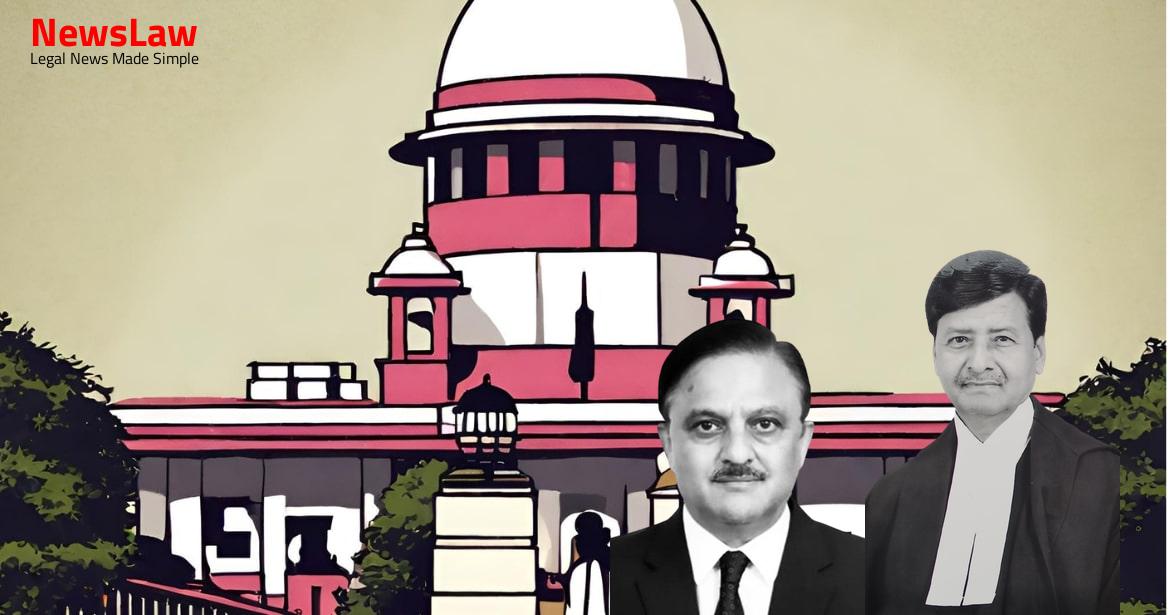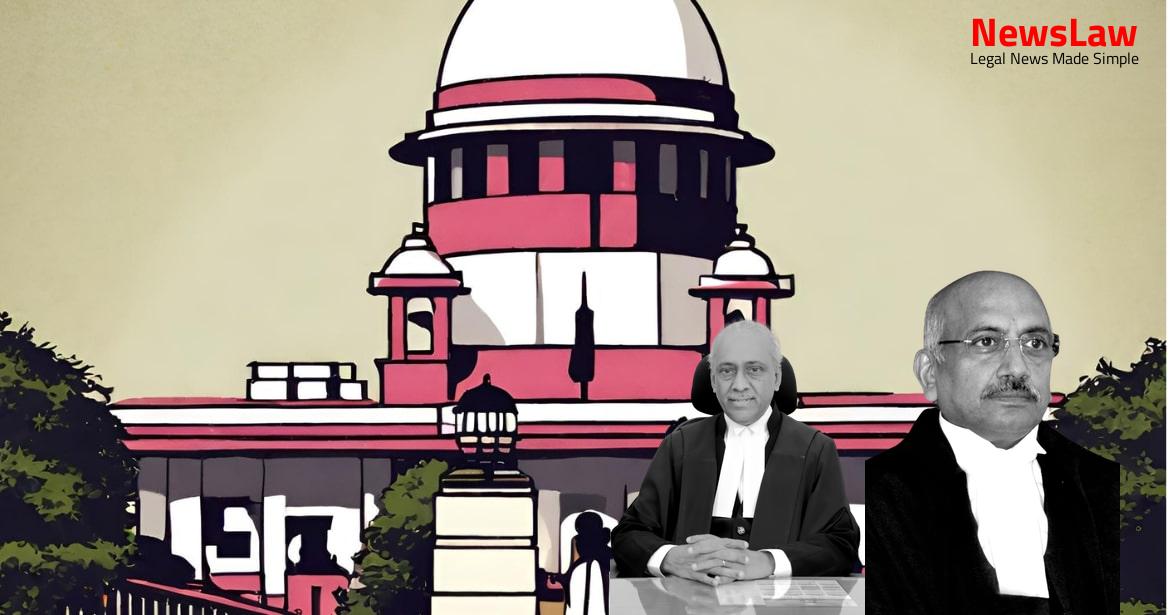In a recent case concerning a Civil Services Examination, the High Court delved into the intricacies of interpreting rules and regulations. The legal analysis focused on the application of rules to ensure equity and adherence to the established procedures. The Court’s in-depth examination sheds light on the importance of clarity and precision in legal interpretations within the context of civil service examinations. Let’s explore the nuances of this case and the significance of correctly interpreting rules in legal proceedings.
Facts
- Candidates who qualified the Combined Civil Services Examination, 2016 had their appointments cancelled initially by the Single Judge’s judgment and later affirmed by the Division Bench of the High Court.
- The High Court instructed that marks from Paper-I (Mains Examination) were not to be added to the total while preparing the merit list for candidate selection.
- Successful candidates were appointed by the Government in July 2020 after clearing all stages of examination and interviews.
- Several writ petitions were filed challenging the examination result, leading to the interpretation of advertisement clauses and rules by the High Court.
- The Court directed the Commission to prepare a fresh merit list without including the marks from Paper-I, based on marks obtained in the written test and viva-voce.
- During the pendency of appeals, status quo was maintained by parties as per the Court’s directive.
- The High Court revisited the selection process for the preliminary examination in light of a previous judgment in the case of Joy Guria Vs. State of Jharkhand.
- The decision of the High Court on the preliminary examination was distinct from the Court’s earlier expressed opinions.
- Prior to the present selection process, the respondents conducted 5 Combined Civil Services Examinations.
- Litigation arose questioning the pattern or result of the preliminary examination conducted by the Commission in April 2017.
- This Court decided on the issues related to the preliminary examination in Civil Appeal no. 9217 of 2018.
- There was ambiguity in the terms of the advertisement for the selection process.
- The result of the preliminary examination was published in February 2017, and candidates were selected for the main examination.
- The examination pattern for the Combined Civil Services Examination was revised by an Expert Committee chaired by Mr. V.S. Dubey, IAS (Retd.).
- The Dubey Committee’s recommendations were considered and approved by the Commission and later amended by a High-Level Committee headed by the Minister in-charge.
- Advertisement No. 23/2016 was published for the 6 Combined Civil Services Examination, 2016, with disputed clauses 12 and 13.
- The Bihar Re-Organisation Act, 2000 and the Bihar Civil Services Rules, 1951 were adopted by the State of Jharkhand for its Civil Service Examinations.
Also Read: Admission Deadline Adherence in Medical Courses
Issue
- Issues (ii) and (iii) were regarding the correct interpretation of the merit list prepared by JPSC.
- The High Court ruled that the ‘minimum qualifying marks’ in each subject of the Main Examination is the correct interpretation.
- The stand taken by JPSC and the State before the Court in Joy Guria case was upheld as the correct approach.
- The Division Bench of the High Court framed and answered these issues during the case proceedings.
- The relevance of adding marks obtained in Paper-I to the total marks was also discussed as issue (i) in the case.
Also Read: From Nominee to Disqualified: Supreme Court Scrutinizes Age Evidence, Declares Election Invalid
Arguments
- Clause 12(b) of the advertisement specifies that candidates must appear in all subjects/papers of the main examination, with a total of 1050 marks.
- The proviso to Rule 17 allows relaxation of norms for Scheduled Castes and Scheduled Tribes with government approval.
- Rule 16 proviso indicates that only after crossing a certain threshold, the total marks secured by the candidate are considered for determining suitability for appointment.
- The High Court interpreted a misreading of Rule 16 by focusing only on one clause instead of considering all relevant clauses.
- The practice of preparing merit lists based on total marks secured in the main examination has been consistently followed by the Commission in the past.
- The Division Bench of the High Court held that marks from Paper I are not added to the total marks for qualification, as per clause 13 of the advertisement.
- There is no ambiguity or subsequent amendment in Rule 16 of the Rules 1951.
- The selection process had been finalized, and the appellants had already been appointed and completed probation before the High Court judgment.
- Clause (a) and (b) of Rule 16 must be read together to understand the discretion of the Commission in fixing qualifying marks in subjects.
- The respondents argue that the merit list error made by the Commission has been rectified by the High Court.
- They assert that they are equally qualified and would have been ranked in the correct order if the Commission had followed the rules properly.
- The procedure for selection must adhere to clauses 12 and 13 of the advertisement, specifying qualifying marks for candidates.
- The interpretation is that candidates need to secure only 30% marks in Paper-I to qualify, with merit based on the other subject papers.
- Respondents claim there was no delay in seeking legal redress, and any delay cannot be blamed on them.
- They emphasize that their right to fair consideration in revising the merit list has been protected by the Division Bench’s interim order.
- Regarding Rule 16 of the Rules, 1951, they point out the punctuation in the proviso after clause (b), indicating its applicability only to that clause.
- The High Court’s detailed analysis in the judgment supports the interpretation of Rule 16, binding the authorities to publish the merit list as per the advertisement.
Analysis
- Rules 15, 16, and 17 of the Rules 1951 are crucial for the case.
- The Combined Civil Services Examination was notified on 6 October 2016.
- Recruitment is to be done under the Bihar Civil Service (Executive Branch) Rules, 1951 adopted by Jharkhand.
- The new Jharkhand Combined Civil Services Examination Rules, 2021 were introduced with Rule 17 laying down criteria for minimum qualifying/aggregate marks.
- Interpretation of the advertisement clauses 12 and 13 led to ambiguity.
- The High Court and Commission had differing interpretations of the advertisement and rules.
- Candidates had completed training and were working for almost 2 years at the time of the case.
- Punctuation marks alone do not control the meaning of the statute; the rules’ intent is key.
- Litigations caused delays in the preliminary examination results.
- Court acknowledged the candidates’ situation and the potential injustice in changing interpretations after candidates had been appointed.
- Interpretation of Rule 16 and its proviso is crucial for determining qualifying marks.
- Ambiguity existed in the advertisement about whether qualifying marks are aggregate or for each subject separately.
- Discussion about the selection process, recommendations made, and appointments done by the Commission and State Government.
- Need for clarity in the advertisement terms for the Combined Civil Services Examination.
- The Court examined the recruitment rules for Assistant Engineers in the Public Works Department.
- Considered the procedure followed by the department for a long time.
- Observed that construction of rules in line with long-standing departmental practice should not be upset.
- Stated that if past practice aligns with possible constructions of rules, it should not be disturbed.
- Highlighted that both views taken by the Commission and the High Court were possible and valid.
- Proviso to Rule 16 should be read in conjunction with both Clause (a) and (b), not just Clause (b) as erroneously observed by the High Court.
- Punctuation marks are considered minor elements in interpreting statutes, especially in cases of subordinate legislation.
- The Division Bench in the impugned judgment was influenced by observations in the Joy Guria case related to preliminary exams, whereas the main examination scheme should have been independently interpreted based on Rules 1951 and Clauses 12 and 13 of the advertisement.
- As a result, the appeals were deemed deserving of success and were allowed.
Decision
- The impugned judgment of the High Court dated 23 February, 2022 is quashed and set aside.
- The transfer petition is dismissed as there is no reason to entertain it.
- Pending application(s), if any, shall stand disposed of.
Case Title: BARUN KUMAR Vs. THE STATE OF JHARKHAND (2022 INSC 868)
Case Number: C.A. No.-005812-005812 / 2022



